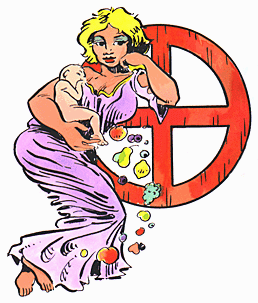EarthGaea, Earth goddess of the ancient Greeks, she was called Terra Mater (Earth Mother) by the Romans (third planet from the sun).
As the earth mother, her symbol is the Greek sign for sphaira, sphere.
Her first-born Earth produc’d,
Of like immensity, the starry Heaven; That he might sheltering compass her around On every side. A few scientific facts about the Earth: You may return to the page of planet images from here. You may return to the page of planet images from here.
|